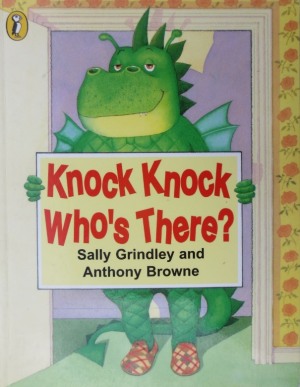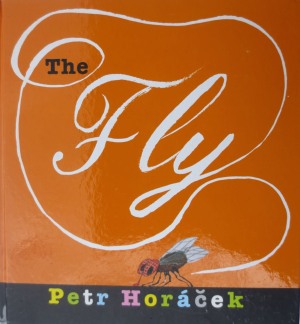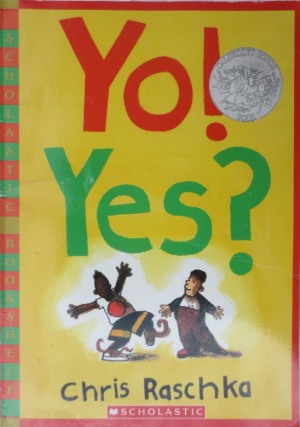Fostering Affective Responses to Picturebooks in the Young Learner Classroom
Sandie Mourão, Portugal
Sandie Mourão is a teacher educator, author and educational consultant based in Portugal, where she specializes in early years language learning and using picturebooks in the ELT classroom. Blog: http://picturebooksinelt.blogspot.pt Website: http://sandiemourao.eu, Email: sjmourao@gmail.com
Menu
Introduction
The norm
Something slightly different
Final comments
Bibliography
References
This article takes a brief look at picturebooks with a view to helping practitioners understand the importance of enabling affective responses to picturebooks in the young learner classroom.
Picturebooks are a form of children’s literature, authentic in both the pictures and the words found inside – the words, traditionally the focus of reading education (Serafini, 2009), are “well crafted” (Bland, 2013:7), rich and varied, rhythmic and fluid in stark contrast to the “simplified texts” found in coursebooks (Ghosn, 2013: 17). The illustrations are of high quality using different forms of illustrative techniques, thus providing for an equally rich visual experience. Using picturebooks in the young learner classroom has become an accepted approach to diversifying activities in language learners contexts for many reasons (see Ellis & Brewster, 2014: 6-7), but there are two I would like to highlight. Due to the presence of both pictures and the words and the ability to decode one or the other or both, picturebooks enable multileveled linguistic and cognitive responses from learners. In addition, thematically picturebooks go beyond the “‘utilitarian’ level of basic dialogues about mundane daily activities, or have [learners] endlessly limited to the present tense” (Ghosn, 2002: 195) and instead address themes that may otherwise go untouched, such as friendship, diversity and loneliness.
There are now a number of publications available which provide a solid theoretical underpinning to using picturebooks in language teaching (see, Birktveit & Williams, 2013; Bland, 2013; Ghosn, 2013). There is also a move to recognize that it is both the pictures and the words in picturebooks that provide opportunities for language use (Bland, 2013; Mourão, 2011), for both words and pictures are read – as such learners are able to make sense of, and create meaning from, what the pictures show and words tell.
Teachers in a young learner context tend to select picturebooks with pictures and words that show and tell similar information, for example Brown Bear, Brown Bear, What do you See? (Martin Jr & Carle, 1967). Here the illustrations show a red bird or a yellow duck and the words tell us this too, “I see a red bird”, “I see a yellow duck” etc. Such picturebooks provide a scaffold to support comprehension for young learners, especially those in pre-primary and the early primary years. Learners feel confident about understanding what they see and hear, happy to predict, memorise the repetitive verbal text, recite along with the teacher during retells and even create their own predictable, repetitive stories with animals and colours. Brown Bear, Brown Bear, What do you See? picturebook is often chosen to reinforce the learning of colour and animal words in English, another reason why teachers select such picturebooks, focusing primarily on lexical sets and concepts that are the focus of young learner curricula (Mourão, 2015). In so doing, picturebooks like The Very Hungry Caterpillar (Carle, 1969) or The Gruffalo (Donaldson & Scheffler, 1999), are well known in the young learner classroom as they include reference to the thematic sets of fruit and food and body words respectively.
When teachers select such picturebooks, their prime concern is the acquisition or reinforcement of certain lexical sets and structures and their objective is for children to be able to understand these particular words, see them used in context and enjoy a storytelling activity using a picturebook. There may be spin-off activities such as playing with mini-cards or making mini-books related to the picturebook (see Mourão, 2003) or talking about food-related likes and dislikes (see Ellis & Brewster, 2014), all neatly associated to the topic of the picturebooks.
Despite this normalized approach to using picturebooks, which creates a low-anxiety atmosphere and one which raises learner confidence, both affect-sensitive principles in language learning (Arnold, 2011), there are a number of other reasons why picturebooks can and should be used in the young learner classroom, which adhere to additional affect-sensitive principles. Using picturebooks in the young learner classroom contributes to developing the whole child, in particular their cognitive, socio-emotional and aesthetic competencies together with their language and literacy skills, especially when the pictures and words show and tell different information. In relation to developing their cognitive competencies, learners are expected to think about what they see and what they read (or hear read to them) and fill the gaps. This encourages a more active learner who has to decipher, make sense of and create personal meaning, on many occasions through talking together with others in class about what the picturebook reveals. Bland goes so far as to say “the cognitive processes that can be set in motion by picture narratives serve to kindle children’s confidence in their own reading response” (2013: 32).

Figure 1: Front cover of Knock, Knock Who’s There? (Grindley & Browne, 2010)
An example of a picturebook which supports cognitive development is Knock, Knock Who’s There? (Grindley & Browne, 2010)1 (see Figure 1), an entertaining book, featuring a little girl snuggled up in bed and waiting for her daddy to come and say goodnight. While she waits, she is visited by all sorts of scary, fairytale creatures in a repetitively visual romp. Each creature is wearing her father’s plaid slippers, which are unlikely to go unnoticed by learners. The girl’s bedroom wallpaper changes with each visit, giving clues to who, or what, is knocking at her bedroom door. For example, before seeing “… a great fat gorilla with fat furry arms and huge white teeth”, we see bananas amongst the rose pattern on the wallpaper or spiked clubs before “The world's tallest giant, with eyes like footballs and feet like a football pitch”. Children are encouraged to predict and look for meaning in the visual clues, as well as make connections between the plaid slippers and the little girl’s father. This picturebook doesn’t really fit into a typical thematic unit in ELT, but is suitable for younger primary learners and sharing such a book provides opportunities for children to use their imagination and prediction skills as well as enjoy a shared social experience (Ellis & Brewster, 2014), all of which contribute to their socio-emotional development as well.

Figure 2: Front cover of The Fly! (Horácek, 2011)
Many picturebooks contain messages that enable children to develop their understanding of social situations and aspects of emotional intelligence, working on understanding their own and others’ emotions, feelings of empathy and concern for others. There are many picturebooks that can be used for this end, but I would like to mention one I am particularly fond of, The Fly! (Horácek, 2011)2, a picturebook that uses animal protagonists to help children see another’s point of view. An intelligent fly, he can even write his own name, as we are shown on the front cover (see Figure 2), invites readers to “… Open my book and take a look inside. There's never a dull moment." Written in the first person, we accompany the fly during a day in his hazardous life, as he wonders aloud why people and animals don’t like him being around. It is a hilarious thought-provoking book which actually ends with children deciding if they want to kill the fly or not – on the final page we see the fly, who has recently escaped a large fly swat, accompanied by a large speech bubble with the following message, “As you can see, my life is not an easy one. I’m just a simple creature. I mean no harm to anyone. So, if you see me, please be kind. HEY, don’t shut the book … HELP … HELP … Do you want to squash me?”. Lots of discussion ensues here around whether or not the book should be closed! Not all children take the fly’s side, but they are certainly encouraged to see the fly’s point of view. This is a picturebook for children of around 8 years old, who are learning how to talk about daily routines in English. Not only will they enjoy the fly's less than mundane daily routine they will have fun continuing the fly's day, inventing all sorts of close-to-death encounters till he goes to sleep at night.
Picturebooks also allow for a meaningful experience, and as such develop children’s confidence in relating their own personal experiences and ideas to the deciphering of the picturebook puzzle. By allowing, and even expecting, personal responses, the teacher is also signaling to learners that their ideas are important and to be taken seriously. How many times do we ask closed questions, expecting a simple response that demonstrates little more than the ability to regurgitate learned information? When sharing picturebooks that beckon interpretation, there is no right or wrong answer, but instead an opportunity to dialogue and discuss the possible reasons and ideas everyone has through “booktalk” (Chambers, 1995). This helps learners see the importance of respecting and listening to others as well as realising that often it is together that we can come to some form of common understanding.

Figure 3: Front cover of Yo! Yes? (Raschka, 2007)
Yo! Yes? (Raschka, 2007)3 is one of my favourite picturebooks for getting children talking about friendships and difference. Its simplicity is deceiving, with one or two words on a page seen together with apparently hasty illustrations. It is a simple story - two boys meet, they talk and become friends. But this very short summary ignores the visual impact of each page and double spread. Raschka uses a large hand written font for each punctuated utterance, and it becomes as much a part of the image as his vibrant depictions of the two boys, one black the other white, both unlikely play companions. Children enjoy sharing anecdotes about friends they have made while on holiday, children they have met from other countries and the reasons why they have friends and why they get on. This may seem a difficult topic for young learners, but upper-primary children can express themselves relatively well when scaffolded by a sensitive teacher who accepts that some of the learners will need to use both their L1 and L2 to get the message across.
“Yo!” is an informal American greeting, also associated with Rap music, which children may already be familiar with. They will have fun investigating other informal greetings and practising them on each other. Another follow up activity is to find out about different ways of greeting in different languages, not just the greeting words, but the actions and gestures that are used to accompany these greetings. If children are helped to think about their own greetings then look at those of others, this supports the development of an intercultural awareness. Finally, this particular picturebook is fantastic for playing around with punctuation, and children have lots of fun dramatizing different ways of saying words and expressions using different punctuation, and also role-playing the boys’ dialogue.
I began by describing picturebooks which readers are probably familiar with, those that contain words and pictures which show and tell the same information. I went on to describe three picturebooks that consider children holistically, involve them in meaningful experiences and allow them to share their personal experiences and what they know about the world. These picturebooks develop a more active learner, who realizes the need to use all their senses when learning English and who also recognizes the importance of using the English they know to talk about, discuss and share ideas. These affect-sensitive principles are possibly less considered when selecting picturebooks for the young learner classroom.
I hope I have convinced readers that we can move beyond learning or contextualizing lexical sets by including picturebooks in our young learner classrooms. Picturebooks bring a multitude of opportunities for children to exercise their right as individuals and to be recognized as fellow appreciators of literature if we enable affective responses to picturebooks through English.
Martin, Jr, B., & Carle, E. (1967). Brown Bear, Brown Bear. What do you See? New York: Henry Holt & Company Books
Carle, E. (1969). The Very Hungry Caterpillar. New York: World Publishing Company
Donaldson, J., & Scheffler, A. (1999). The Gruffalo. Oxford: Macmillan Children's Books
Grindley, S., & Browne, A. (2010). Knock, Knock, Who’s There? London: Picture Puffin
Horácek. P. (2011) The Fly. London: Walker Books.
Raschka, C. (2007). Yo! Yes? New York: Scholastic
Arnold, J. (2011). Attention to affect in language learning. Anglistik. International Journal of English Studies, 22 (1), 11-2.
Birketveit, A., & Williams, G. (Eds.). (2013). Literature for the English Classroom. Bergen: Fagbokforlaget.
Bland, J. (2013). Children's Literature and Learner Empowerment. London: Bloomsbury Academic.
Chambers, A. (1995). Booktalk: Occasional Writing on Literature and Children. Gloucester: Thimble Press.
Ellis, G., & Brewster, J. (2014). Tell it Again! The Storytelling Handbook for Primary Teachers (3rd ed.). London: British Council. www.teachingenglish.org.uk
Ghosn, I.-K. (2002). Four good reasons to use literature in primary school ELT, ELT Journal, 56 (2), 172-79.
Ghosn, I.-K. (2013). Storybridge to Second Language Literacy. The Theory, Research and Practice of Teaching English with Children’s Literature. Charlotte, NY: Information Age Publishing.
Mourão, S. (2003). Junior English Timesavers ‘REALBOOKS! in the Primary Classroom. London: Mary Glasgow Scholastic.
Mourão, S. (2011). Demystifying the picturebook, IN English: The British Council magazine for teachers of English in Lusophone Countries (British Council: Porto), 11-15, accessed from: http://issuu.com/britishcouncilportugal/docs/inenglishdigital_01
Mourão, S. (2015). The potential of picturebooks with young learners. In J. Bland, (Ed.), Teaching English to Young Learners. Critical Issues in Language Teaching with 3-12 year olds (pp. 199-213). London: Bloomsbury Academic.
Serafini, F. (2009). Understanding visual images in picturebooks. In J. Evans (Ed.), Talking Beyond the Page. Reading and Responding to Picturebooks (pp. 10-25). Oxford: Routledge.
1 For a blog post about this picturebook, please go to:
http://picturebooksinelt.blogspot.pt/2012/06/knock-knock.html
2 For a blog post about this picturebook, please go to:
http://picturebooksinelt.blogspot.pt/2013/10/the-flys-story.html
3 For a blog post about this picturebook, please go to:
http://picturebooksinelt.blogspot.pt/2010/11/about-being-friends.html

Please check the Methodology & Language for Kindergarten Teachers course at Pilgrims website.
Please check the Methodology & Language for Primary Teachers course at Pilgrims website.
Please check the How the Motivate your Students course at Pilgrims website.


|